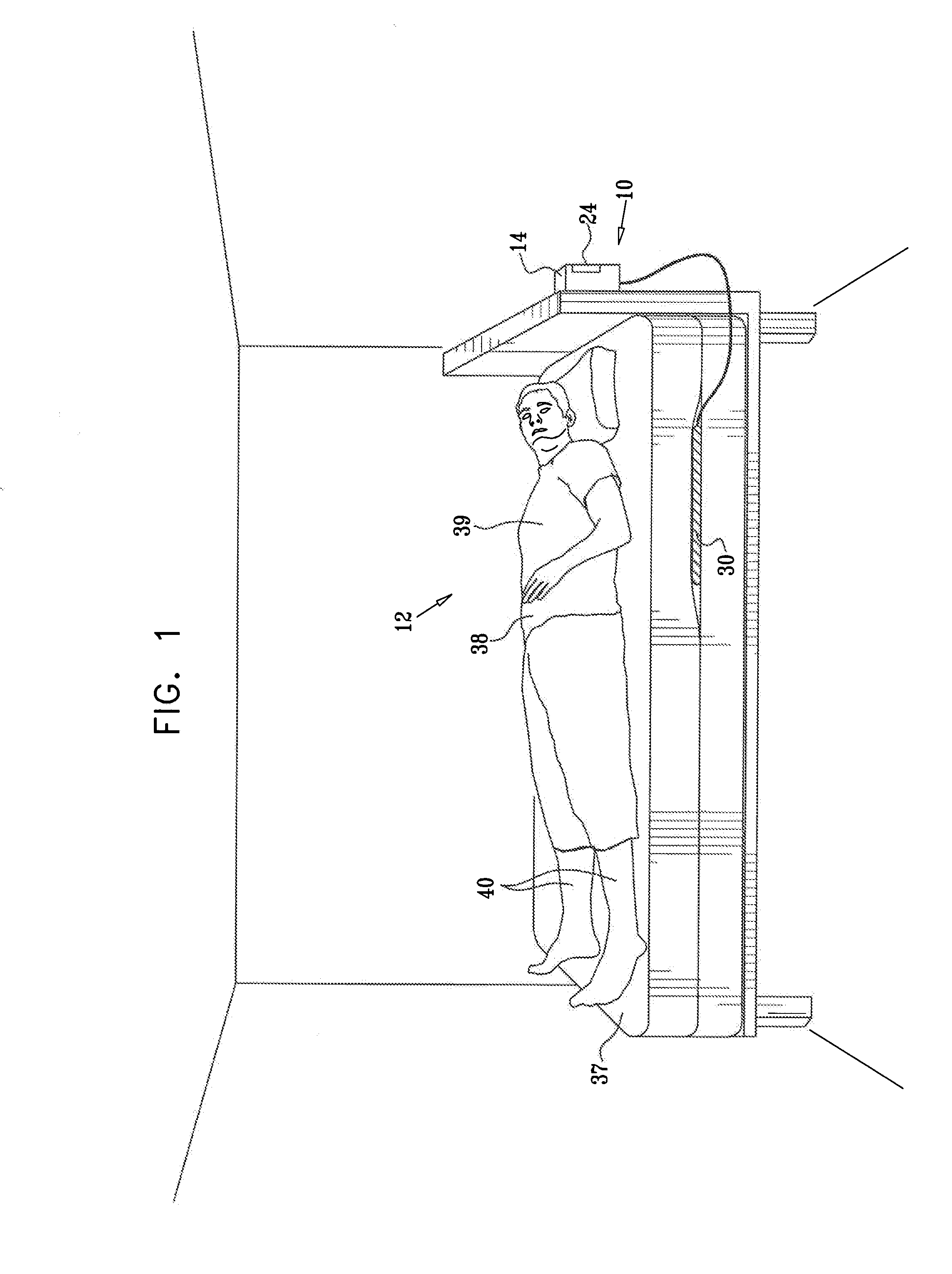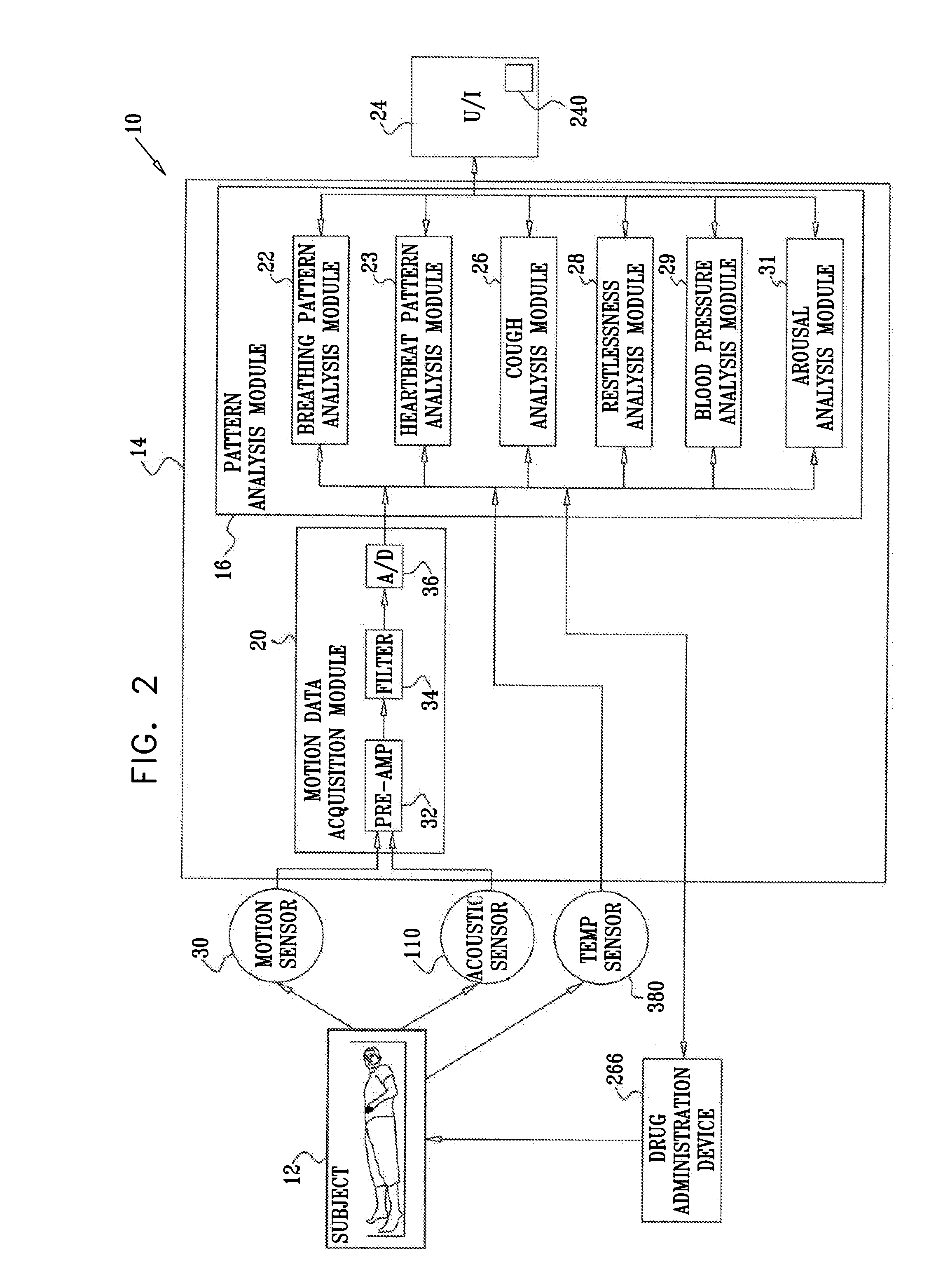Prediction and monitoring of clinical episodes
a clinical episode and abnormal physiological condition technology, applied in the field of prediction and monitoring abnormal physiological conditions, can solve problems such as asthma management, abnormal breathing and heartbeat patterns, and abnormal patterns related to the cause of modification, and achieve the effects of improving patient and physician comfort, reducing the risk of asthma, and improving patient comfor
- Summary
- Abstract
- Description
- Claims
- Application Information
AI Technical Summary
Benefits of technology
Problems solved by technology
Method used
Image
Examples
Embodiment Construction
[0580]FIG. 1 is a schematic illustration of a system 10 for monitoring a chronic medical condition of a subject 12, in accordance with an embodiment of the present invention. System 10 typically comprises a motion sensor 30, a control unit 14, and a user interface 24. For some applications, user interface 24 is integrated into control unit 14, as shown in the figure, while for other applications, the user interface and control unit are separate units. For some applications, motion sensor 30 is integrated into control unit 14, in which case user interface 24 is either also integrated into control unit 14 or remote from control unit 14.
[0581]FIG. 2 is a schematic block diagram illustrating components of control unit 14, in accordance with an embodiment of the present invention. Control unit 14 typically comprises a motion data acquisition module 20 and a pattern analysis module 16. Pattern analysis module 16 typically comprises one or more of the following modules: a breathing pattern...
PUM
 Login to View More
Login to View More Abstract
Description
Claims
Application Information
 Login to View More
Login to View More - R&D
- Intellectual Property
- Life Sciences
- Materials
- Tech Scout
- Unparalleled Data Quality
- Higher Quality Content
- 60% Fewer Hallucinations
Browse by: Latest US Patents, China's latest patents, Technical Efficacy Thesaurus, Application Domain, Technology Topic, Popular Technical Reports.
© 2025 PatSnap. All rights reserved.Legal|Privacy policy|Modern Slavery Act Transparency Statement|Sitemap|About US| Contact US: help@patsnap.com



